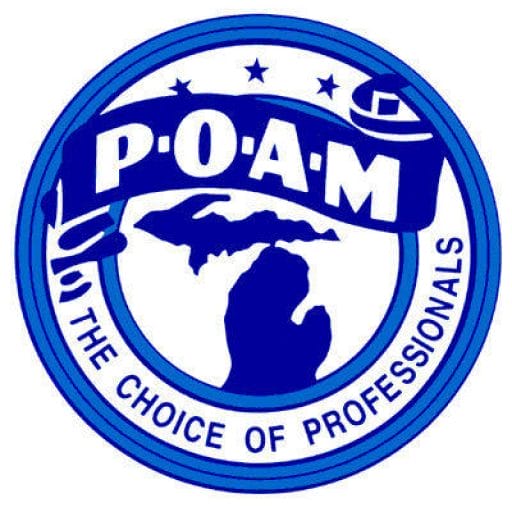Legislative Update – Michigan law enforcement funding 2025 budget
Matt Sowash, M.L.C. & Kenneth E Garbowski, POAM
The State of Michigan has finalized its Fiscal Year 2025-26 budget, concluding on of the most debated and contentious budget negotiations in recent years. While much of the public discussion in Lansing is centered on infrastructure investments and road funding, there were several notable provisions within the budget that directly support public safety and the state’s law enforcement community.
Recognizing the vital role police officers and first responders play in keeping Michigan communities safe, lawmakers targeted investments to strengthen local law enforcement agencies, enhance officer training, and expand community safety resources.
Key law Enforcement Funding Highlights
$75 million for public safety and violence revenue sharing payments – This new funding provides a significant boost to governments to help address violent crime and support proactive safety initiatives. Of this amount, $68.6 million will be distributed directly to local units of government, with allocations determined based on local violent crime data. The goal is to ensure resources are directed where they are most needed to make measurable improvements in community safety outcomes.
$13.3 million for in-service training statewide – Administered through Michigan Commission on Law Enforcement Standards (MCOLES), this investment supports continuing education and professional development opportunities for officers across Michigan. The training funds will help departments strengthen skills in critical areas such as de-escalation techniques, crisis response, mental health awareness, and community engagement – ensuring Michigan’s officers are well prepared to meet the evolving challenges of modern policing.
While infrastructure and economic development dominated much of the conversation in Lansing this year, these law enforcement funding measures represent meaningful progress for officers, departments, and the residents they serve and were strongly advocated for by POAM.
Public Safety Revenue Sharing Grants – $50 Million (ongoing)
The ongoing portion of these grants will be distributed as follows:
- DHHS to administer a community violence intervention program – $3.25 million
- Cities, Villages and Townships (CVT)- $35,062,500 (distributed as detailed)
- Step 1: Determine the average violent crime count base on the highest two raw violent crime totals in preceding three years. For example, if a Township had 1 violent crime in 2022, 3 in 2023, adn 10 in 2024 the formula would require 10+3=12/2=6.5.
- Step 2: Determine the statewide total violent crime count.
- Step 3: Divide the CVT specific count by statewide count.
- Step 4: Multiply the product of Step 3 by thee total amount available for distribution.
No municipality would be permitted to receive more that 25%$ of the $35 million award.
Each CVT that receives any dollars under the $35M would be required to spend 75% of the payout on law enforcement activities or personnel, except for the following which are prohibited:
- Pension and benefits payments
- Lawsuit and claim payments
- Debt payments
- Purchasing a vehicle that weighs more than 15,000 pounds
- Acquiring facial recognition technology
25% of the payout could be used on non-law-enforcement public safety related initiatives including to but not limited to:
- Recruitment or retention
- Training programs
- Equipment purchases
- Programs to reduce identified risks to public safety
- Crime diversion programs
- Operational emergency medical or firefighter services
- Capital improvements to public safety buildings or structures
Counties [ $11,687,500 (distributed as detailed below)
These funds will be distributed in a manner that is inverse to a county’s taxable value. Counties would have the same payout spending requirements as CVT’s, which are described above.
Public Safety Sharing Grants – $20 million (one time)
Police scholarships – $10 million is earmarked for distribution by Michigan Commission on Law Enforcement Standards (MCOLES) as follows:
- Not more than $20,000 per recruit for the police academy scholarships on a first come first served basis.
- Pay the salaries of training academy recruits from local public safety agencies or of cadets receiving tuition assistance.
To be eligible for a scholarship, an individual must have applied to at least 1 law enforcement basic academy approved by MCOLES, have completed an interview, and received approval from, the public safety agency the individual intends to serve.
Not more than 25 scholarships per public safety entity would be permitted to be approved. MCOLES could only use $140,000 to administer the program.
Additional Community Dollars – $10 million in additional funding to Cities, Villages, and Township (CVT’s) and Counties that follows a 75/25 split – i.e. $7.5 million to CVT’s and $2.5 million to Counties.
Public Safety Constituency Grants – $25 million (one time)
County Prosecutors – $17 million to county prosecutors to reduce the average caseload per attorney. To be elgible for a grant, county prosecutors would have to meet all of the follow criteria:
- The county prosecutor must recieve at least the same amount of county funding in FY26 as they did in FY25.
- The county is 1 of 15 with the highest per 1,000 residents violent crime rate.
- The county prosecutor applies for a grant via forms prescribed by Treasury and the application shows the funding will be used only for reducing average caseload per attorney.
- The county prosecutor submits information demonstrating the number of staff, average caseload per attorney, and the local funding received by the office.
The amount of money to be given for a grant would be required to be greater of either the following:
- The amount received under the FY24 budget for high-crime community support grants.
- $7.50 multiplied by the county population.
Firefighters – $8 million for equipment or gear for firefighters, which is distributed by:
- $4 million for full-time
- $4 million for predominantly part on call, part-time, or volunteer departments.

